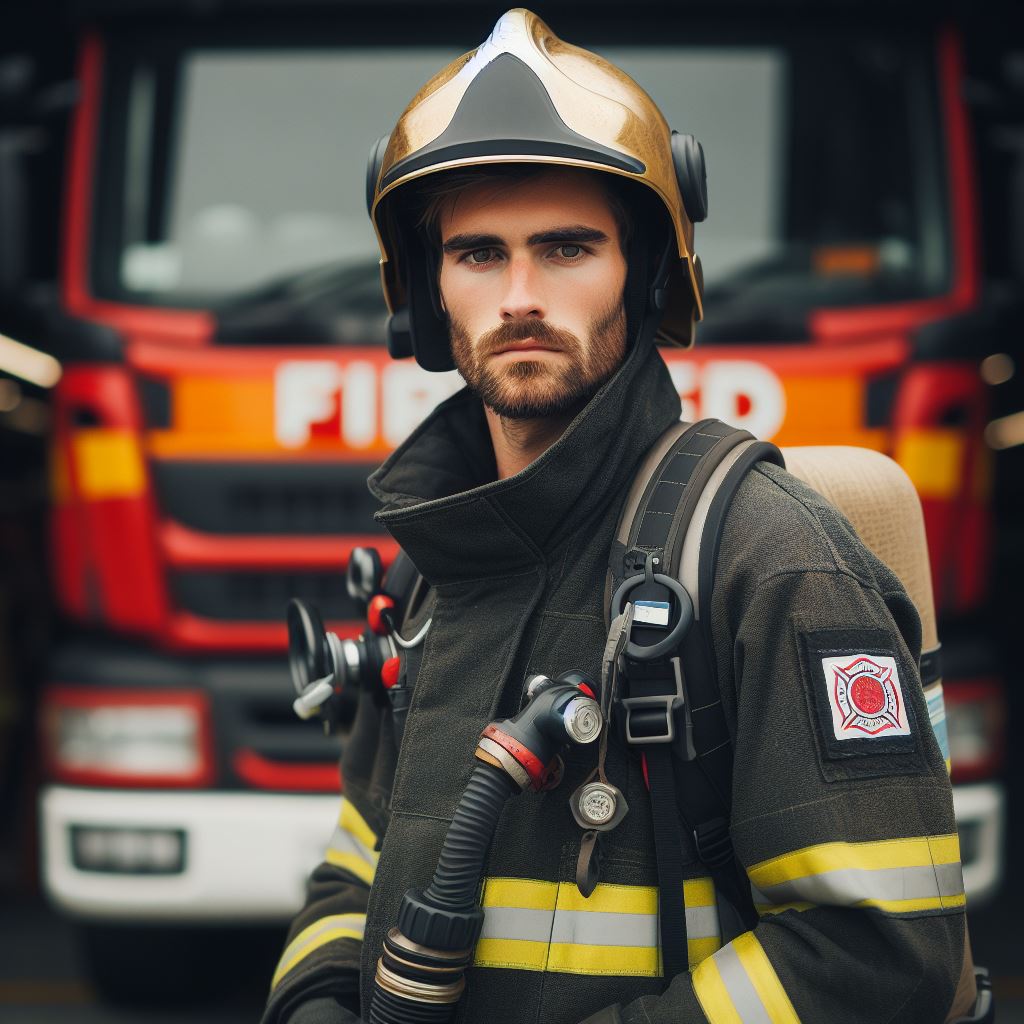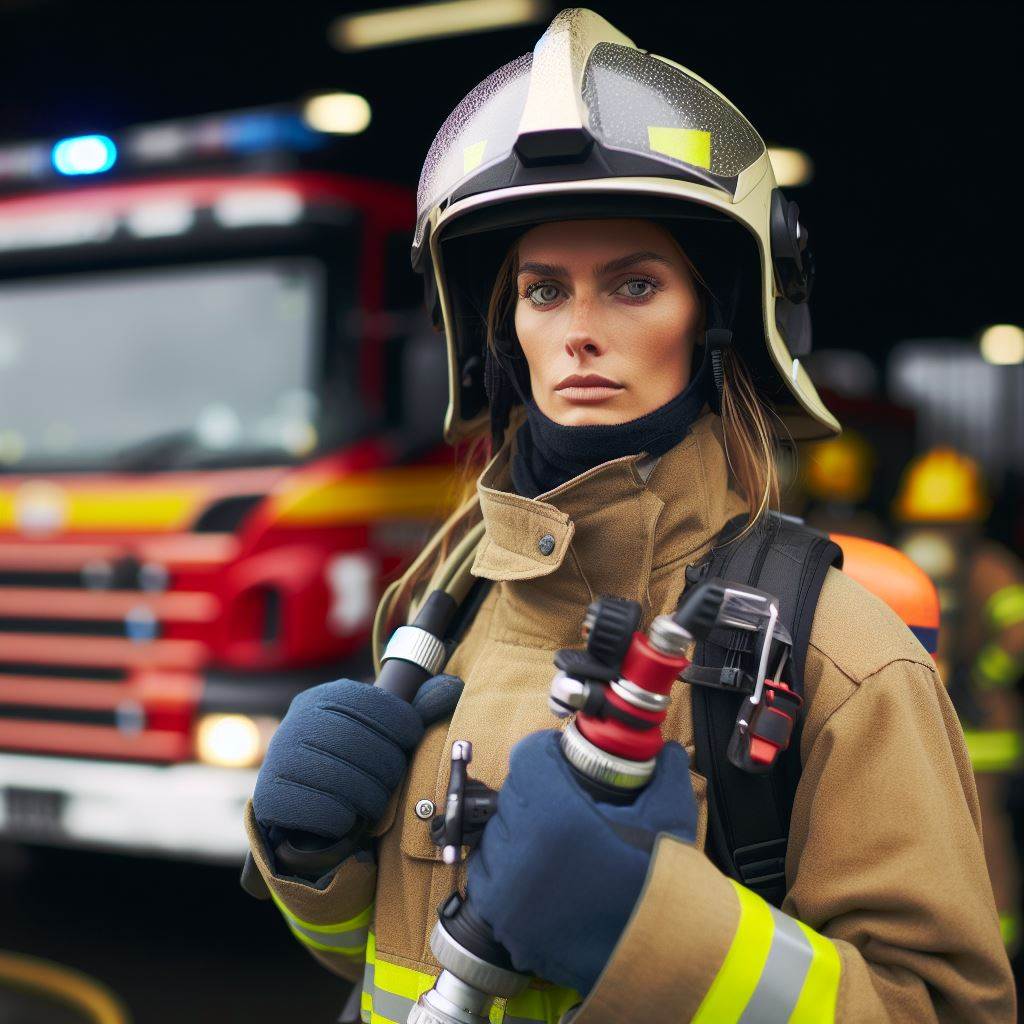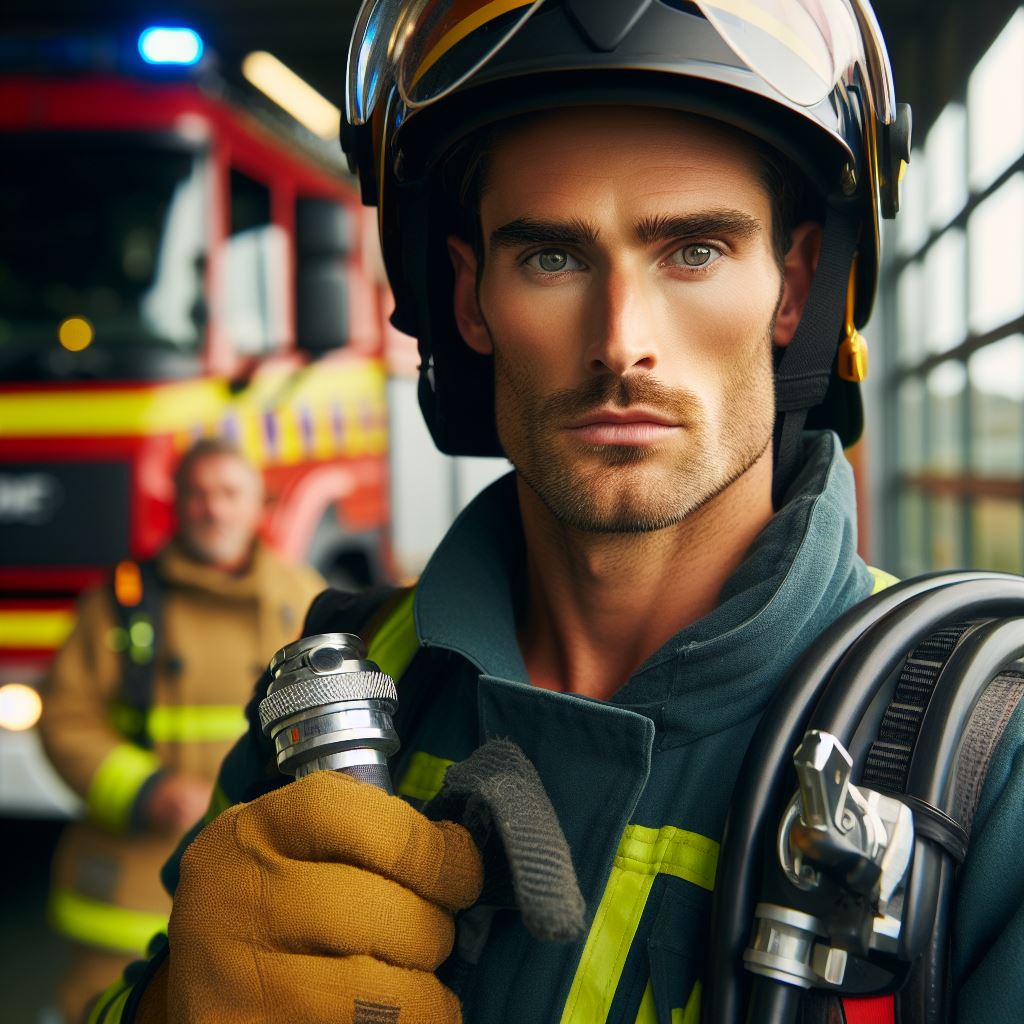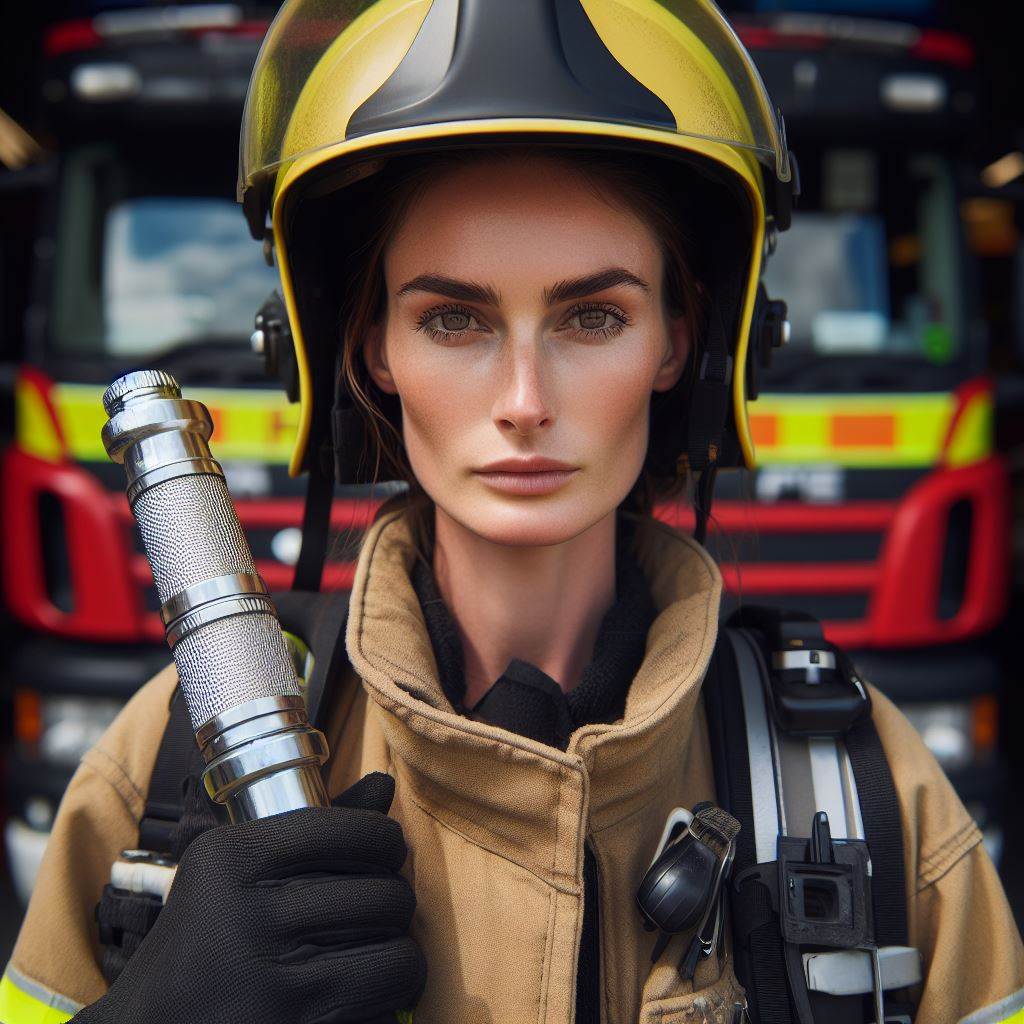Introduction
In New Zealand, firefighting gear stands as a stalwart defense against the perils firefighters confront daily.
From battling fierce flames to navigating treacherous environments, this specialized equipment becomes their lifeline.
Without it, the risks would be insurmountable, jeopardizing not only the lives of firefighters but also the communities they serve.
Protective gear isn’t just a formality; it’s a shield against heat, smoke, and toxins.
The gear comprises various components meticulously designed to provide comprehensive protection.
From flame-resistant outer layers to thermal insulation, each element serves a critical purpose in safeguarding firefighters.
Moreover, in the unique landscape of New Zealand, where bushfires and structural fires pose constant threats, the importance of reliable firefighting gear cannot be overstated.
The gear enables firefighters to operate effectively in diverse conditions, whether they’re combating wildfires in rugged terrain or navigating confined spaces in urban settings.
This blog post aims to delve into the intricacies of firefighting gear from a New Zealand perspective.
We’ll explore the evolution of this equipment, highlighting technological advancements and the specific considerations tailored to the country’s unique challenges.
By understanding the significance of firefighting gear and the rigorous standards it adheres to, we gain insight into the dedication and resilience of those who wear it.
Through this exploration, we hope to shed light on the unsung heroes who risk their lives to protect others and the indispensable role that their gear plays in ensuring their safety and success.
Overview of Firefighting Gear
Primary types of firefighting gear used in New Zealand
Firefighters rely on specialized gear to protect themselves and effectively combat fires.
In New Zealand, there are several primary types of firefighting gear that play crucial roles in ensuring firefighter safety and efficiency.
1. Helmets
Helmets are an essential piece of firefighting gear as they provide protection for the firefighter’s head, particularly against impacts and falling debris.
Personalized Career Consulting
Unlock your potential with expert career advice tailored to your goals. Get personalized guidance and actionable steps toward your dream career in New Zealand.
Get StartedThey are designed to be heat resistant and have visors to shield the face from heat and smoke.
2. Boots
Firefighting boots are specially designed to provide excellent traction, support, and protection for the feet and ankles.
They are made of durable materials that can withstand exposure to extreme temperatures, sharp objects, and chemicals.
3. Breathing Apparatus
The breathing apparatus is a critical piece of gear that allows firefighters to breathe in a smoke-filled environment.
It consists of a mask, a regulator, and an air cylinder that provides clean, breathable air while filtering out harmful gases and particles.
4. Protective Clothing
Firefighters wear specialized protective clothing, often referred to as bunker gear or turnout gear.
This includes fire-resistant jackets, pants, and gloves that provide insulation, thermal protection, and prevent direct contact with flames and hot surfaces.
5. Firefighting Hoses
Fire hoses are essential tools for firefighters to deliver water or firefighting agent to extinguish fires.
They are constructed from robust materials to endure high water pressures and are available in various lengths and diameters to suit different firefighting scenarios.
6. Communication Devices
Effective communication is crucial during firefighting operations, especially in large incidents.
Firefighters use handheld radios and communication systems to stay connected with their team, receive instructions, and relay important information quickly and efficiently.
The Importance of Firefighting Gear
Each piece of firefighting gear serves a specific function and plays a vital role in ensuring the safety and well-being of firefighters.
Without these essential gear components, firefighters would be exposed to significant risks and limitations.
The helmet protects the firefighter’s head from falling objects, impacts, and heat, reducing the risk of severe head injuries.
Transform Your Career with a Professional CV and Cover Letter
Stand out to employers with an ATS-optimized resume and tailored cover letter designed to match your dream role. Let us craft your job application materials for success!
Get StartedSimilarly, the boots shield the feet and ankles from burns, punctures, and slips, allowing firefighters to move freely and confidently in hazardous environments.
The breathing apparatus is crucial for maintaining respiratory health by supplying clean air and preventing inhalation of toxic gases and smoke.
It enables firefighters to operate efficiently and for sustained periods within smoke-filled environments, reducing the risk of smoke inhalation-related injuries.
Protective clothing acts as a barrier against flames and extreme heat, reducing the risks of burn injuries.
The specialized materials used in the clothing provide insulation, heat resistance, and protection from hazardous chemicals, creating a safer working environment for firefighters.
Firefighting hoses are essential tools for extinguishing fires by delivering water or firefighting agents directly to the source of the fire.
They enable firefighters to control and suppress flames effectively, minimizing property damage, and preventing the spread of fire.
Communication devices ensure effective coordination and collaboration among firefighters at the scene.
The ability to communicate clearly and receive timely updates enhances situational awareness, improves response times, and ultimately enhances overall firefighter safety and operational effectiveness.
Read: How to Join NZ’s Firefighting Ranks
Quality Standards and Regulations
When it comes to firefighting gear, there are specific quality standards and regulations that must be met in New Zealand.
These regulations are enforced by various regulatory bodies and play a crucial role in ensuring firefighter safety.
Quality Standards
- EN 469: This European Standard specifies the minimum performance requirements for protective clothing for firefighting.
- AS/NZS 4967 and AS/NZS 4824: These Australian and New Zealand Standards outline the requirements for structural firefighting helmets.
- AS/NZS 2161.6: This Standard focuses on the performance requirements for gloves used by firefighters.
- AS/NZS 4821: This Standard specifies the minimum requirements for firefighters’ protective clothing and equipment.
Meeting these quality standards ensures that firefighting gear in New Zealand is reliable and efficient in protecting firefighters during emergency situations.
Regulatory Bodies
The responsibility for enforcing the quality standards and regulations lies with several regulatory bodies in New Zealand. These bodies include:
Boost Your Career with a Standout LinkedIn Profile
Attract recruiters and expand your network with a fully optimized LinkedIn profile tailored to highlight your strengths and professional goals. Let your profile open doors to new opportunities!
Get Optimized- Fire and Emergency New Zealand (FENZ): FENZ is the primary organization for firefighting services in the country and plays a significant role in setting and enforcing firefighting gear regulations.
- New Zealand Fire Service Commission: The Fire Service Commission is responsible for developing and implementing policies related to fire safety, including the regulation of firefighting gear quality.
- Standards New Zealand: This organization works in collaboration with international and Australian/New Zealand standards bodies to develop and maintain the standards for firefighting gear.
These regulatory bodies ensure that the quality standards and regulations for firefighting gear are regularly reviewed, updated, and enforced to guarantee the highest level of safety for firefighters.
Importance of Adhering to Regulations
Adhering to the quality standards and regulations in firefighting gear is of utmost importance for firefighter safety. Here’s why:
- Protection: Firefighting gear that meets the required standards offers enhanced protection against heat, flame, and other hazardous conditions faced by firefighters.
- Reliability: Adherence to regulations ensures that the gear is reliable and performs optimally during emergencies, minimizing the risk of failure or malfunction.
- Standardization: By adhering to recognized standards, firefighting gear maintains a level of consistency, allowing for interoperability and effective coordination among firefighters.
- Accountability: Compliance with regulations holds manufacturers, suppliers, and users accountable for the quality and performance of firefighting gear, promoting a culture of safety.
- Continuous Improvement: Regular reviews and updates of quality standards drive innovation and improvement in firefighting gear, further enhancing firefighter safety and effectiveness.
Ultimately, strict adherence to quality standards and regulations guarantees that firefighters in New Zealand are equipped with reliable and effective gear to carry out their life-saving duties.
In short, adherence to specific quality standards and regulations is crucial in the field of firefighting gear in New Zealand.
Regulatory bodies enforce these standards, and complying with them ensures optimal firefighter safety.
Upholding quality standards is essential as it provides reliable protection, promotes accountability, and drives continuous improvement in firefighting gear.
Read: Day in a Life of a Kiwi Firefighter

Cutting-Edge Technology in Firefighting Gear
Firefighting gear in New Zealand has undergone significant advancements and innovations in recent years, revolutionizing the way firefighters tackle dangerous situations.
The introduction of new technologies, such as heat-resistant fabrics or improved breathing systems, has greatly enhanced firefighter safety and efficiency.
Advancements and Innovations
- Heat-Resistant Fabrics: Firefighting gear now incorporates state-of-the-art fabrics that can withstand extreme temperatures.
- Improved Breathing Systems: Firefighters have access to advanced breathing apparatus that provide better respiratory protection in hazardous environments.
- Integrated Communication Systems: Modern gear allows seamless communication between firefighters, enhancing coordination and response times.
- Enhanced Visibility: Gear now features reflective materials and built-in lights to improve visibility in smoke-filled environments.
Enhanced Safety and Efficiency
The introduction of these cutting-edge technologies has had a profound impact on firefighter safety and operational effectiveness.
Firstly, heat-resistant fabrics have significantly reduced the risk of burns and injuries.
Firefighters can now operate in high-temperature environments with greater confidence, knowing that their gear provides reliable heat protection.
Improved breathing systems have also revolutionized firefighting.
The new apparatus ensures a constant supply of clean, filtered air, enabling firefighters to work for longer durations without compromising their respiratory health.
This advancement has proven to be critical in situations with limited oxygen or high levels of toxic gases.
The integration of communication systems within firefighting gear has greatly improved coordination and situational awareness.
Firefighters can now easily communicate with each other, relay crucial information, and coordinate their efforts more efficiently.
This feature has resulted in better teamwork, reduced response times, and ultimately more effective fire suppression.
Furthermore, the enhanced visibility provided by modern gear has addressed a significant safety concern.
In the past, thick smoke often hindered firefighters’ ability to navigate through burning structures.
With reflective materials and built-in lights, firefighters can now easily locate each other and navigate through smoke-filled environments with improved visibility, increasing their safety and preventing accidents.
Overall, the advancements and innovations in firefighting gear in New Zealand have tremendously improved both the safety of firefighters and the efficiency of their operations.
The introduction of heat-resistant fabrics, improved breathing systems, integrated communication, and enhanced visibility features have revolutionized the way firefighters combat fires and navigate hazardous environments.
Firefighters can now confidently face dangerous situations, knowing that they have cutting-edge gear that provides optimal protection and assists in their mission to save lives and property.
Read: NZ Firefighters: Skills and Training Guide
Considerations for NZ Firefighting Gear
Factors taken into consideration when choosing firefighting gear in New Zealand
In New Zealand, firefighting gear is carefully chosen to ensure that firefighters are equipped to face the specific challenges they may encounter.
The following factors are taken into consideration:
1. Climate
New Zealand experiences a varied climate, from subtropical in the north to temperate in the south.
Firefighters need gear that can withstand different weather conditions, including rain and high winds.
2. Terrain
New Zealand’s landscape is diverse, with mountains, forests, and coastal areas.
Firefighters may have to navigate challenging terrain while combating fires, so their gear needs to be durable and provide adequate protection.
3. Unique Challenges
New Zealand faces unique firefighting challenges, such as wildfires caused by dry weather or volcanic eruptions.
Firefighters must be equipped with specialized gear to handle these specific situations.
How the gear is tailored to meet these specific requirements
To meet these specific requirements, firefighting gear in New Zealand is tailored in the following ways:
1. Protective Clothing
Firefighters wear flame-resistant clothing made from materials such as Nomex or Kevlar.
These materials provide thermal protection and minimize the risk of burns.
2. Breathing Apparatus
Due to the presence of hazardous smoke and gases, firefighters use self-contained breathing apparatus (SCBA).
SCBAs filter the air and provide clean, breathable oxygen to firefighters in smoke-filled environments.
3. Communication Devices
Firefighters need to communicate effectively during operations.
They use radios and communication systems with noise-canceling features to ensure clear communication in noisy environments.
4. Firefighting Tools
New Zealand firefighters rely on tools like fire hoses, nozzles, and portable pumps to suppress and extinguish fires.
These tools are designed to be lightweight and versatile, allowing firefighters to respond quickly and efficiently.
5. Personal Protective Equipment (PPE)
Firefighters wear PPE, including helmets, gloves, and boots, to protect themselves from falling debris and other hazards.
These items are made from high-quality materials to ensure durability and maximum safety.
In general, firefighting gear in New Zealand is carefully selected to address the specific factors unique to the country.
The gear is designed to withstand the diverse climate and challenging terrain, while also providing protection against the unique challenges faced by firefighters.
By utilizing tailored gear, firefighters in New Zealand are well-equipped to combat fires and save lives.
Read: NZ Police’s Role in National Security
Maintenance and Inspection
Regular maintenance and inspection of firefighting gear is of utmost importance to ensure the safety and effectiveness of firefighters.
1. Importance of Regular Maintenance and Inspection
- Regular maintenance and inspection help identify any potential issues or defects in the firefighting gear.
- It ensures that the gear is in optimum condition and ready to perform effectively during emergencies.
- Regular maintenance also extends the lifespan of the gear, saving costs in the long run.
- It reduces the risk of gear failure during critical situations, preventing injuries or fatalities.
2. Procedures and Frequency of Gear Inspection
- Firefighting gear should undergo a thorough inspection after each use or exposure to hazardous conditions.
- Inspections should include a visual check for any visible damage, such as tears, cuts, or chemical contamination.
- The gear should also be inspected for functional aspects, like the functionality of zippers, buckles, and reflective materials.
- Regular inspections should be conducted at intervals determined by the manufacturer’s guidelines or departmental policies.
- Some gear elements may require more frequent inspections, such as SCBA (Self-Contained Breathing Apparatus), which should be checked daily.
3. Ensuring Longevity and Effectiveness
- Proper maintenance and inspection significantly contribute to the longevity and effectiveness of firefighting gear.
- Regular inspection helps identify and address minor damage or wear before they develop into more significant issues.
- Timely repairs or replacements can be made, ensuring that the gear remains in optimal working condition.
- Routine cleaning of the gear also improves its lifespan by preventing the buildup of dirt, contaminants, and chemicals.
- Regular maintenance ensures that the gear meets regulatory or manufacturer’s standards, guaranteeing its reliability during emergencies.
4. Tips for Effective Gear Maintenance
- Clean the gear regularly following the manufacturer’s instructions, using appropriate cleaning agents.
- Ensure proper drying of the gear after cleaning to prevent mold or mildew formation.
- Store the gear in designated areas away from direct sunlight, excessive heat, or chemicals that could damage the materials.
- Inspect and test the gear’s accessories, such as gloves, helmets, and boots, for wear, tear, or malfunction.
- Keep detailed records of maintenance and inspection for each gear item, including dates and findings.
In a nutshell, regular maintenance and inspection are vital for the longevity and effectiveness of firefighting gear.
By following proper procedures and conducting frequent checks, potential issues can be identified and resolved promptly.
This ensures that firefighters have reliable gear to protect themselves and effectively respond to emergencies.
Conclusion
Firefighting gear plays a significant role in New Zealand by ensuring the safety and effectiveness of firefighters in their critical roles.
The continuous advancements in gear technology and regulations have greatly contributed to enhancing firefighter safety.
It is crucial to support firefighters by providing them with the best gear possible.
This not only ensures their safety but also enables them to carry out their duties efficiently and effectively.
As technology continues to evolve, it is essential for individuals, communities, and government bodies to understand the importance of investing in advanced firefighting gear.
This includes keeping up with the latest advancements and regulations to provide firefighters with the best possible protection.
Above all, it is important to remember that firefighters put their lives on the line every day to keep our communities safe.
They deserve our support, and providing them with the best gear possible is a way we can show our gratitude.
Let us come together to prioritize the safety and well-being of our firefighters by ensuring they have access to the latest gear and equipment available.
By doing so, we can contribute to a safer New Zealand and honor the bravery and dedication of our firefighting heroes.




